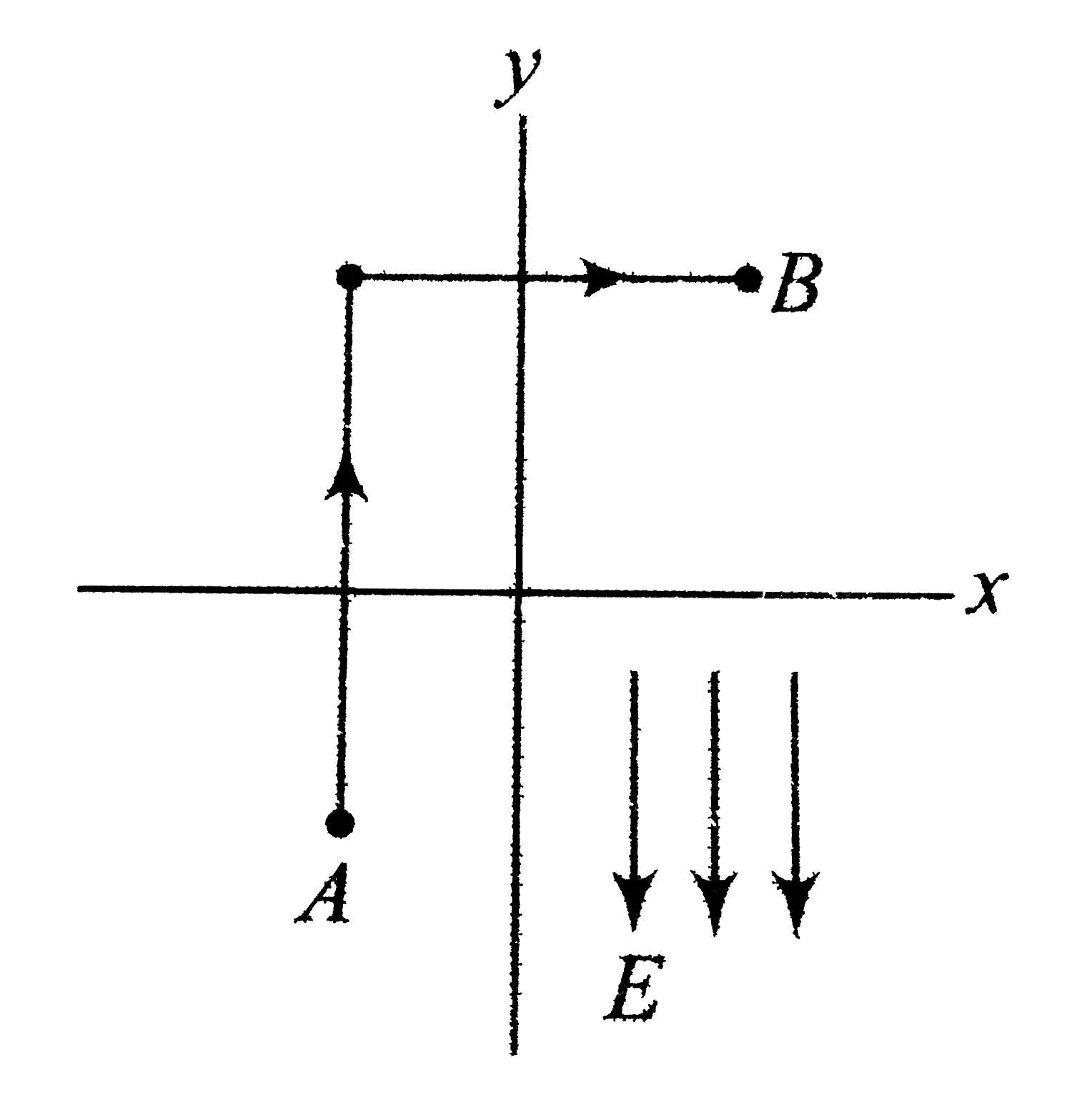Moment of a force of magnitude 10 N acting along positive y-direction at point about the point in N-m is
10
20
30
The correct Answer is:B
To solve the problem of finding the moment of a force of magnitude 10 N acting along the positive y-direction at the point (2m, 0, 0) about the point (0, 1m, 0), we will follow these steps:
Step 1: Identify the position vectors
We need to identify the position vector of the point of application of the force and the point about which we are calculating the moment.
- Point of application of force P=(2,0,0)
- Point about which we are calculating the moment O=(0,1,0)
Step 2: Calculate the position vector →r
The position vector →r from point O to point P is calculated as follows:
→r=P−O=(2−0)^i+(0−1)^j+(0−0)^k=2^i−1^j
Step 3: Define the force vector →F
The force vector →F is given as acting along the positive y-direction with a magnitude of 10 N:
→F=10^j
Step 4: Calculate the moment →M
The moment →M is calculated using the cross product of the position vector →r and the force vector →F:
→M=→r×→F
Substituting the values of →r and →F:
→M=(2^i−1^j)×(10^j)
Step 5: Calculate the cross product
To compute the cross product, we can use the determinant method:
→M=∣∣
∣
∣∣^i^j^k2−100100∣∣
∣
∣∣
Calculating the determinant:
→M=^i∣∣∣−10100∣∣∣−^j∣∣∣2000∣∣∣+^k∣∣∣2−1010∣∣∣
Calculating each of the determinants:
1. For ^i: (−1)(0)−(10)(0)=0
2. For ^j: (2)(0)−(0)(0)=0
3. For ^k: (2)(10)−(−1)(0)=20
Thus, we have:
→M=0^i−0^j+20^k=20^k
Step 6: Conclusion
The magnitude of the moment is:
|→M|=20N-m
The moment acts along the positive z-axis.
Final Answer
The moment of the force about the point (0, 1m, 0) is 20 N-m.
---
We need to identify the position vector of the point of application of the force and the point about which we are calculating the moment.
- Point about which we are calculating the moment O=(0,1,0)
The position vector →r from point O to point P is calculated as follows:
The force vector →F is given as acting along the positive y-direction with a magnitude of 10 N:
The moment →M is calculated using the cross product of the position vector →r and the force vector →F:
To compute the cross product, we can use the determinant method:
∣
∣∣^i^j^k2−100100∣∣
∣
∣∣
2. For ^j: (2)(0)−(0)(0)=0
3. For ^k: (2)(10)−(−1)(0)=20
The magnitude of the moment is:
The moment of the force about the point (0, 1m, 0) is 20 N-m.
Topper's Solved these Questions
- ROTATIONBOOK - DC PANDEY ENGLISHCHAPTER - ROTATIONEXERCISE - (B) Chapter Exercises
25 Videos
- ROTATIONBOOK - DC PANDEY ENGLISHCHAPTER - ROTATIONEXERCISE - (C) Chapter Exercises
39 Videos
- ROTATIONBOOK - DC PANDEY ENGLISHCHAPTER - ROTATIONEXERCISE - Check point 9.3
15 Videos
- RAY OPTICSBOOK - DC PANDEY ENGLISHCHAPTER - RAY OPTICSEXERCISE - Integer type q.
14 Videos
- ROTATIONAL MECHANICSBOOK - DC PANDEY ENGLISHCHAPTER - ROTATIONAL MECHANICSEXERCISE - Subjective Questions
2 Videos
Similar Questions
Moment of a force of magnitude 20 N acting along positive x-direction at point (3m,0,0) about the point (0,2,0) (in N-m) is
View SolutionA particle moves from a point (2m,3m,0) to (3m,2m,0) under the action of force of magnitude 5N acting along the line y=x. The work done by the force on the particle during the displacement is
View Solution
Knowledge Check
Two points A and B located in diametrically opposite directions of a point charge of +2μC at distances 2.0 m and 1.0 m respectively from it. Determine the potential difference VA−VB
A3×103VB6×104VC−9×103VD−3×103V
A uniform electric field of magnitude 325Vm−1 is directed in the negative y - direction in (fig. 3.12). Theb coordinates of point A are (−0.2m,−0.3m) and those of point B are (0.4m,0.5m). Calculate the potential difference VB−VA along the path shown in the figure.
 .
.
View SolutionA current of 10A is established in a long wire along the positive z-axis. Find the magnetic field (vec B) at the point (1m , 0 , 0).
View SolutionA particle of mass 20g experiences a gravitational force of 4.0N along positive x - direction. Find the gravitational field at that point.
View SolutionThree forces ˆi+2ˆj−3ˆk,2ˆi+3ˆj+4ˆkandˆi−ˆj+ˆk acting on a particle at the point (0,1,2) the magnitude of the moment of the forces about the point (1,-2,0) is
View SolutionA force F=2ˆi+3ˆj−ˆk acts at a point (2,-3,1). Then magnitude of torque about point (0,0,2) will be
View SolutionAn infinite number of charges, each of magnitude q, are placed along x-axis at x = 1m, 2m, 4m, 8m, 16m and so on but the consecutive charges are of opposite sign starting with +q at x = 1m. A point charge q0 , kept at the origin, experiences a force of magnitude :
View SolutionA particle starts from the origin, goes along x-axis to the point (10 m, 0) and then returns along. The same line to the point (-10 m, 0). The distance and displacement of the particle during the trip are
View Solution
